How we are positioning for the next lithium boom (site visit insights)
Earlier this month, my colleague Luke Laretive and I spent the week in Western Australia, meeting companies and contacts as part of our regular “get out to find out” schedule. Seeing things firsthand is crucial—desktop analysis is all well and good, but spending days with management, asking tough questions, getting nuanced answers and gaining direct industry insight in a casual setting significantly enhances your investment process.
Our first stop was the Pilbara, which is now responsible for 14% of global lithium supply. After the 2hr flight from Perth with Pilbara Minerals (ASX: PLS) we spent the day touring the Pilgangoora mine site. The first stop on the electric bus tour was the Pilgangoora central pit where CEO Dale Henderson and the very impressive divisional leaders explained the intricacies of the deposit, the mining process, the challenges they face and the plans moving forward.
Below is a photo of the central pit. The pegmatites (spodumene-hosting rocks) are light in colour and stratified or stacked between basalt (dark, waste material). The scale of the operations is awesome to see in person.
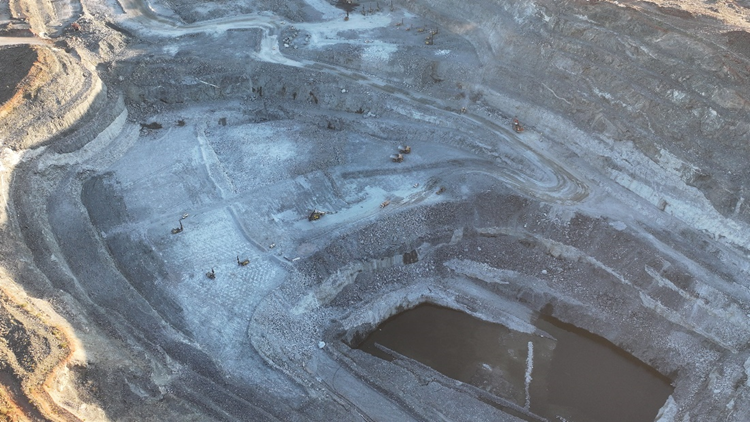
Pilgangoora central pit. Source: Pilbara Minerals site visit
The bus then made its way over the impressive ore sorters, a true innovation at Pilgangoora and the only one of its kind operating at this scale anywhere in the world. Without going too much into the nitty-gritty of how this works, PLS is clearly a global leader in managing the contact zones between the pegmatites and the basalt – maximising recoveries and keeping mining costs low.
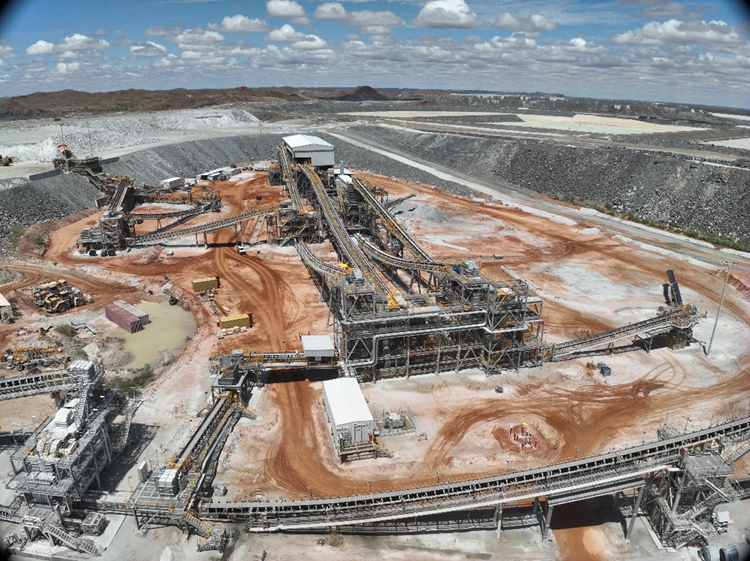
Pilgangoora crushing and ore sorting facility. Source: Pilbara Minerals site visit
The main takeaway from an operational perspective is that the P1000 expansion project – which will see production at Pilgangoora increase from c.650ktpa to 1,000ktpa, is on time and on budget, scheduled for completion at the end of 2024. Following that, Pilbara can expand further with the P2000 expansion project.
We see PLS as having a low-risk organic expansion pathway that can be enhanced through inorganic acquisitions, funded by its strong balance sheet and cash flow. Its recent acquisition of Latin Resources (ASX: LRS) demonstrates to us that the PLS management team are thinking long-term and looking to leverage the significant competitive advantage they’ve established in spodumene.
PLS is held in the Seneca Australian Shares SMA.
After finishing up with PLS around 5 p.m., the team from Wildcat Resources (ASX: WC8) collected a handful of fund managers and analysts and drove us the short distance (47km) to their camp at Tabba Tabba.
The Tabba Tabba project is, in our opinion, the best, undeveloped lithium project in Western Australia that hosts a large-scale orebody that should support a mine life of 20+ years.
Wildcat acquired the Tabba Tabba tantalum project in May 2023 from Global Advanced Materials (GAM), a company backed by Resource Capital Funds. Tabba Tabba is one of the 'big 4' lithium mines that originated from GAM's portfolio. The other 3 were Pilbara Minerals (ASX: PLS)'s Pilgangoora, IGO (ASX: IGO)'s Greenbushes, and Mineral Resources (ASX: MIN)'s Wodgina. GAM previously focused only on tantalum mining from these assets, but the same mineralization has since proven highly profitable for lithium production.
A full analysis on Wildcat can be found here.
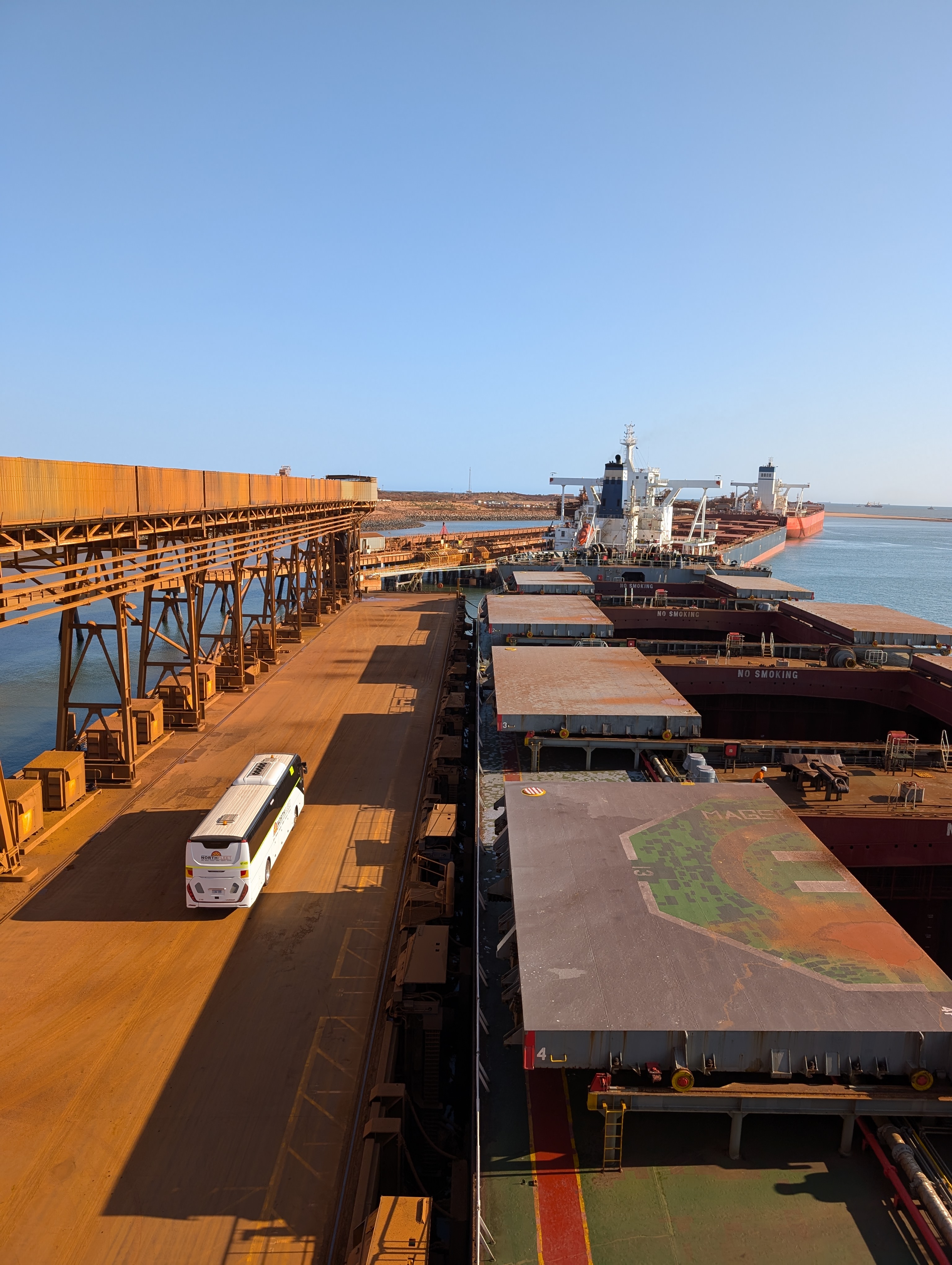
Thursday morning was an early start to make the 2-hour drive to Port Hedland, where we toured the Utah Point terminal.
Utah Point services the non-majors (who have their own terminals) and would be used by the likes of Wildcat to export their spodumene concentrate once in production. Given the global significance of the port's iron ore export operations, this was a highlight.
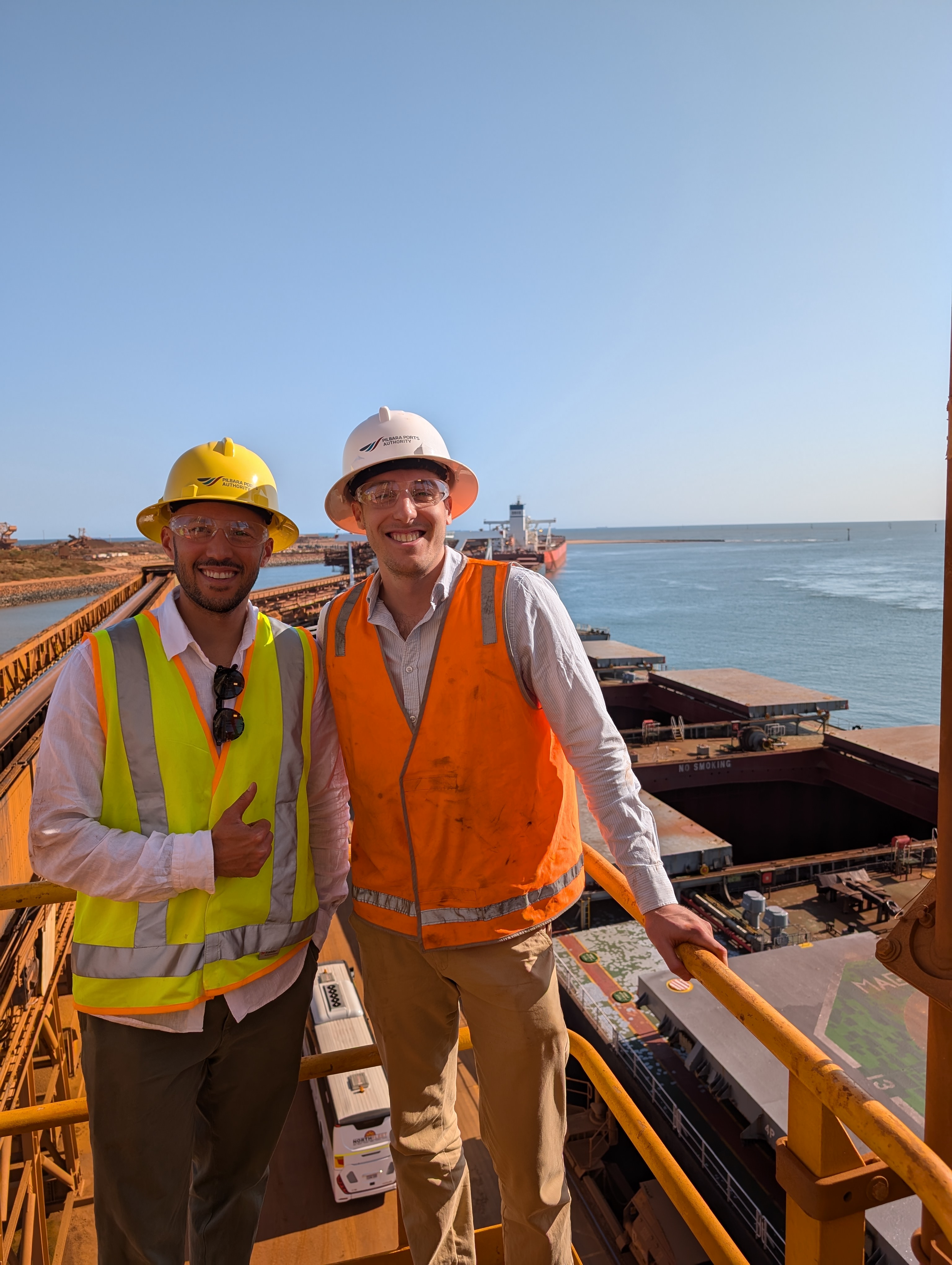
Wildcat’s proximity to the port (80km away) and the associated infrastructure in the region is a key advantage relative to many other lithium-rich regions around the globe. But from our perspective, it is Wildcat's existing mining lease that gives it a significant relative advantage to other players in the Pilbara.
Thursday afternoon was spent walking the pegmatite outcrops and examining the drill cores (under blue light) at Wildcat’s Tabba Tabba camp. Recent drill intersections, including 84.0m @ 1.4% Li2O, demonstrate the thickness and continuity of the orebody, which we believe could prove amenable to low-cost mining and relatively high recoveries.
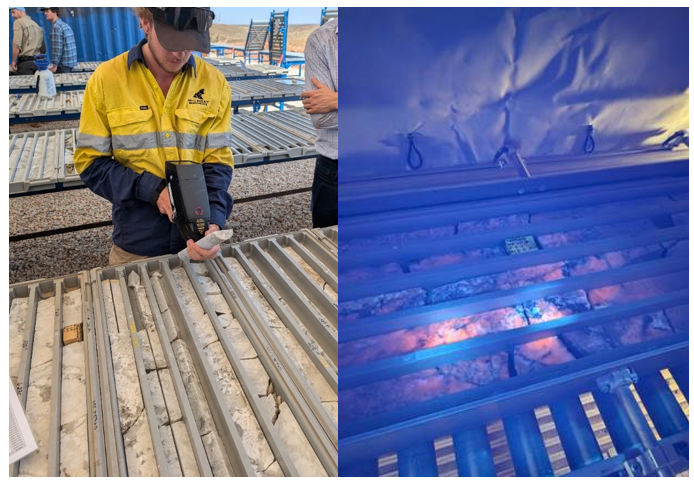
Whether you invest in mining or not, I'm sure you can appreciate that the Pilbara is a beautiful part of the world and a fantastic example of Australian entrepreneurship, innovation and competitive advantage.
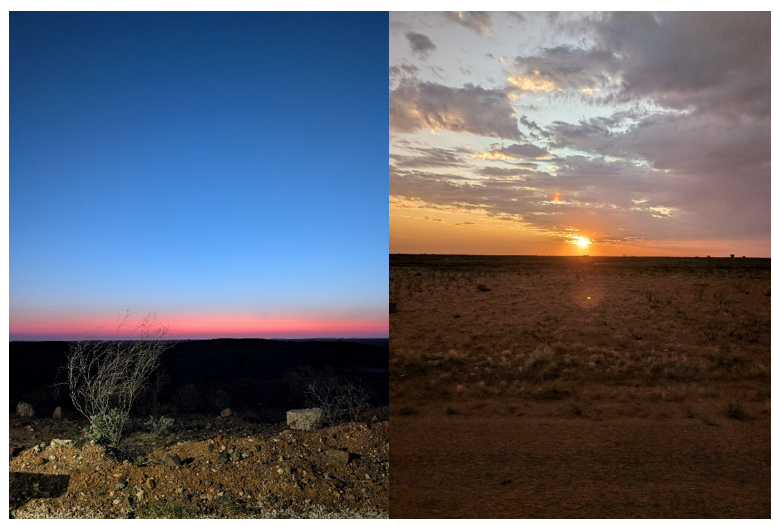
My key takeaways
The importance of good management in mining
Mining is a tough business with lots of moving parts: volatile commodity prices, difficult and dangerous operating environments, large workforces, and constant competition for capital (among other things). Success typically follows excellent leaders who are committed to fostering a culture of respect, safety, passion, and enjoyment of the job. It's the reason why well-managed miners trade at such a premium to peers.
Similarly, great people attract top talent—crucial when building a company from the ground up, especially in a tight labour market. To succeed, you need to be able to convince exceptional candidates to join your team, often for less than their market value. This is like many other industries, but it stood out to me on this trip.
Wildcat’s managing director AJ Saverimutto is a mine builder, with previous roles as the mine manager of Grasberg, one of the largest open pit gold mine in the world (now owned by Freeport-McMoran). Geology Manager Torrin Rowe, a key player in Wildcat’s lithium discovery, spent over six years at Evolution Mining (ASX: EVN), one of Australia’s largest gold companies with a market cap exceeding $10 billion. Evolution has proven to be a talent hub, as seen with AIC Mines (ASX: A1M)—another Seneca portfolio company—whose team also came from Evolution and is now successfully advancing a copper mine in Queensland.
There's money to be made in small-cap resources.
Many East Coast fund managers shy away from investing in pre-production mining. We think this is a mistake, as it’s one of the few sectors where Australia has a unique, globally significant competitive advantage.
At Seneca, we’ve worked hard to build up our organisational knowledge of the small-cap mining sector and are confident in our ability to leverage this into sustainable excess returns for our clients. We think it’s a sector where astute private investors can also outperform.
Even if you're not directly investing in mining companies, building up your knowledge of the sector opens new investment opportunities - there are high-quality companies servicing the sector through drilling, hospitality, labour hire, laboratory testing, technology, etc., all of which directly complement the small-cap mining exploration and development sector.
If you want some ideas on how we invest in these adjacent industries, our previous commentary here, here, and here outlines a few names.
BHP, RIO and FMG have an unassailable competitive advantage in iron ore
BHP (ASX: BHP), Rio Tinto (ASX: RIO), and Fortescue (ASX: FMG) have spent c.$24 billion on projects in the Pilbara over the last decade. Our tour of Port Hedland with its kilometre-long trains, dedicated port and stockyards made it abundantly clear that even if someone had the money to attempt to muscle in on the ‘big 3’, and assuming they could find another tier-1 iron ore asset, it’s unlikely they’d be able to replicate their physical, social and technical infrastructure.
Opportunity in lithium
Roughly 35 analysts and fund managers attended this year's Pilbara Minerals site visit, down from 85 attendees last year. Lithium investors are clearly still nursing fresh battle scars. But where others baulk, opportunities often emerge (as we've pointed out here).
Marginal lithium mines are closing. So far we’ve seen Core Lithium (ASX: CXO)'s Finniss and Arcadium Lithium (ASX: LTM)'s Mt Cattlin get pushed into care & maintenance while Chinese lepidolite (CATL) has also been shelved. If prices stay low, we expect more supply to drop out of the market – specifically, high-cost spodumene.
Meanwhile, lithium brine remains largely misunderstood. We presented our thesis on lithium brine 15 months ago on Livewire (here), and while we were definitely early, Rio Tinto's recent acquisition of Arcadium Lithium, held in the Seneca Australian Shares SMA, validates our thinking.
As you can probably imagine, a handful of analysts and fund managers sitting on a bus for a few hours results in some entertaining, ‘spirited’ debate about our “top picks”. Luke (as he’s been known to do) dusted off his stockbroking skills and pitched his latest thinking surrounding Vulcan Energy Resources (ASX: VUL), a lithium brine company at the forefront of DLE.
Using the back seat of the bus as our sample set, it was clear to me (at least at the time, prior to the RIO/LTM deal) that very few fund managers or analysts had adequately investigated the potential for direct lithium extraction (DLE) to participate meaningfully in the battery supply chain, much less disrupt higher cost spodumene.
Without naming and shaming our counterparts, the comments about Arcadium were along the lines of "too complex", "too much focus on downstream" and "lacked technical expertise” to appeal to the likes of Rio Tinto. Luke and I, however, have long argued that these assets are underrated, with Rio Tinto the likely acquirer, given their Rincon asset is just 300km south of LTM's Olaroz and RIO management's previous experience working in Argentina. A week later, the deal was announced, and in our view, we think this takeover is the ‘starter gun’ for the next phase of growth in the lithium sector and, specifically, the emergence of DLE as the critical technology to unlock value.
Wildcat (WC8) is a takeover target
Our prediction is that the Pilbara lithium province needs to consolidate to thrive. Wildcat Resources (WC8) is the logical bolt-on acquisition, specifically for Pilbara Minerals (PLS).
Our thesis is quite straightforward:
- Tabba Tabba (WC8) is only 47km from Pilgangoora (PLS) and 87km from Wodgina (MIN) - there are large synergies to be extracted (knowledge of the ore bodies, infrastructure, camps, airport, water/power access, processing plants, people, government etc.)
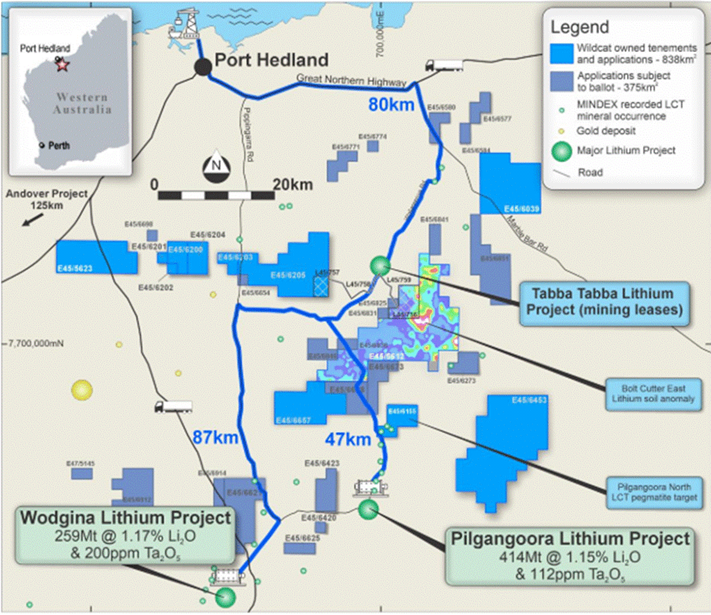
Mineral Resources (ASX: MIN) is a 19.9% shareholder in WC8, but with a stretched balance sheet (~$3 billion net debt), selling its WC8 stake could free up >$100m cash. As an aside, we think MIN could use the stake to negotiate a profitable, mutually beneficial mining services contract.
Wildcat offers exceptional relative value at c. $450m market cap. Azure Minerals (ASX: AZS) 70% stake in the Andover project (c. 200km from Tabba Tabba) was acquired for A$1.7 billion in May 2024 by Gina Rinehart's Hancock Prospecting and SQM (NYSE: SQM). Wildcat owns 100% of Tabba Tabba and holds a granted mining lease that could potentially enable lithium sales up to three years ahead of Azure.
We think this transaction will happen soon, with the pending maiden JORC resource for Tabba Tabba a likely catalyst for action.
Pilbara Minerals refinanced its debt this month, freeing up $600m of dry powder (vs. WC8's market cap of $450m). Pilbara has a track record of buying countercyclically (see its acquisitions of Latin Resources and Altura Mining).
WC8 is held in the Seneca Australian Small Companies Fund.
We’d also like to take the opportunity to thank Pilbara Minerals (PLS) and Wildcat Resources (WC8) for graciously hosting us and being so generous with their time and expertise.
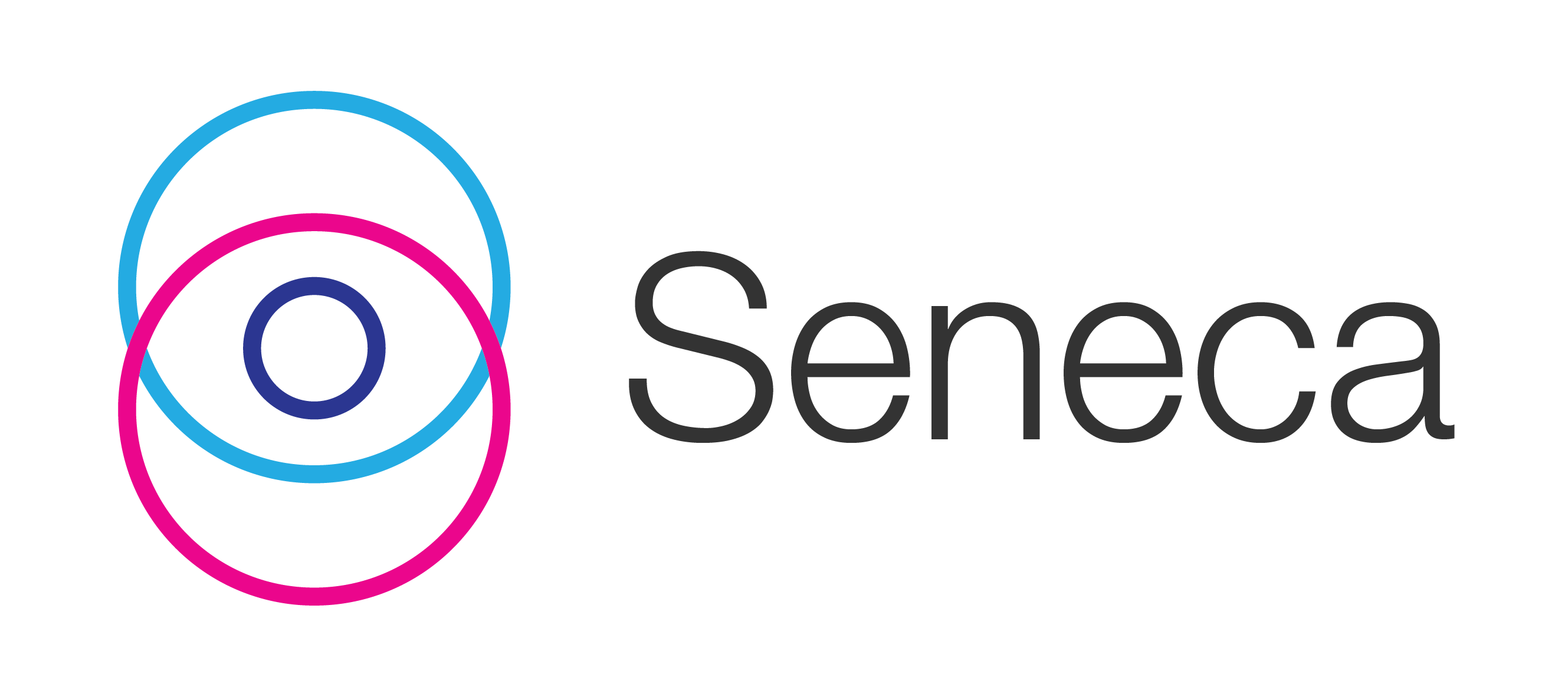
If you’d like to book a call with myself and/or Luke, feel free to book a consultation with us.
4 topics
15 stocks mentioned
1 fund mentioned
1 contributor mentioned

